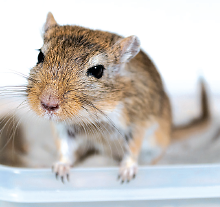Mixing Tobacco, Cannabis May Increase Tobacco Dependence
Many people use cannabis and tobacco mixed together. New research published in Frontiers in Psychiatry suggests that mixing these drugs may increase dependence and lower the desire to quit tobacco.
The researchers examined the responses of over 33,000 cannabis users who participated in the 2014 Global Drug Survey and compared those who used cannabis with tobacco with those who did not. All subjects also used tobacco alone.
There were no strong differences between users who mixed cannabis and tobacco and those who did not in their desire to reduce or quit cannabis use, but those who used cannabis only showed 1.1 increased odds to want to use less tobacco, 1.8 increased odds to want help to use less tobacco, and 2.0 increased odds of actively seeking help to use less tobacco.
“Given a changing legislative environment surrounding access to cannabis in many jurisdictions, increased research focus should be given to reducing the use of routes of administration that involve the co-administration of tobacco,” said study author Michael Lynskey, Ph.D., a professor of addictions at King’s College London in a statement.
Hindocha C, Freeman T, Ferris J, et al. No Smoke Without Tobacco: A Global Overview of Cannabis and Tobacco Routes of Administration and Their Association With Intention to Quit.
Front Psychiatry. July 5, 2016; 7:104.
Researchers Identify Neural Pathway Linked With Aggression
Aggressive behaviors, known to occur in a number of neuropsychiatric disorders, are believed to arise partly from the inappropriate activation of brain reward systems in response to aggressive or violent social stimuli. A recent animal study published in Nature has found a mechanism by which specific brain reward regions interact to modulate the motivational or rewarding component of aggressive behavior.
The investigators exposed young male mice to smaller intruders and observed that about 70 percent of the mice exhibited aggressive behavior to the intruder mouse while 30 percent were nonaggressive. These social interactions were part of a conditioning test that showed that the aggressive male mice developed a conditioned place preference for that environment—suggesting they found bullying the other mouse to be rewarding.
The aggressive mice exhibited increased activity in a set of GABA (gamma aminobutyric acid)–containing neurons in the basal forebrain, which projected to and inhibited activity in the lateral habenula, an area of the brain that normally induces aversion to aggressive stimuli.
The researchers then used optogenetic tools to directly manipulate these GABA neurons and found that inhibiting them could stimulate neuronal firing in the lateral habenula and lead to decreased aggressive behavior.
Golden S, Heshmati M, Flanigan M, et al. Basal Forebrain Projections to the Lateral Habenula Modulate Aggression Reward.
Nature. June 29, 2016; 534(7609):688-92.
Vulnerable Narcissism Linked With Higher Risk of Problem Internet Use
An analysis of 535 university students found that people who can be identified as vulnerable narcissists—having a defensive sense of grandiosity that is associated with low self-esteem, shyness, and hypersensitivity—have a heightened risk of problematic internet use, particularly on social networking sites.
This study was published in Cyberpsychology, Behavior, and Social Networking.
The students were assessed using both the Hypersensitive Narcissism Scale and an abbreviated Narcissistic Personality Inventory questionnaire, the NPI-16. These tests classified the individuals as vulnerable narcissists, grandiose narcissists (who display more overt arrogance and exhibitionism), or non-narcissists.
The vulnerable narcissists had significantly higher combined scores on the Generalized Problematic Internet Use Scale-2 compared with both grandiose narcissists and non-narcissists, with an especially strong difference related to their preference for online social interactions. There were no observed internet behavior differences between grandiose narcissists and non-narcissists.
The authors cautioned that they focused on undergraduate students since this is a population at high risk for social media addiction, and thus the results may not be applicable to a broader adult population.
Casale S, Fioravanti G, Rugai L. Grandiose and Vulnerable Narcissists: Who Is at Higher Risk for Social Networking Addiction?
Cyberpsychol Behav Soc Netw. June 30, 2016. [Epub ahead of print]
Child-Onset Schizophrenia Shows Limited Gender Differences
Although gender differences in schizophrenia have been reported in adults—males typically have a younger age of onset, worse premorbid functioning, and a worse course of illness—less is known of whether there are similar gender differences associated with childhood-onset schizophrenia.
To address this gap in knowledge, researchers at the National Institute of Mental Health carried out a comprehensive analysis of 133 patients with childhood-onset schizophrenia and 124 age- and gender-matched healthy controls. The team looked at a range of demographic, clinical, and familial traits, as well as MRI scans of key brain regions.
Although not as significant as their adult counterparts, males with childhood-onset schizophrenia did show an earlier age of onset than females (mean age 9.51 versus 10.29).
Males with childhood-onset schizophrenia also had on average higher rates of comorbid pervasive developmental disorder and higher rates of comorbid attention-deficit/hyperactivity disorder, though the ratios were similar to those in the general population.
No other significant gender differences were associated with other measures, including premorbid functioning.
This study was published in the Journal of the American Academy of Child and Adolescent Psychiatry.
Depression Reduces Adherence to COPD Medications
A study published in the Annals of the American Thoracic Society showed that the onset of depression in older adults with chronic obstructive pulmonary disease (COPD) can decrease adherence to maintenance respiratory medications.
The study investigators obtained data from a random sample of Medicare beneficiaries (average age 68) and identified approximately 31,000 people with a COPD diagnosis who were taking maintenance medications like inhaled corticosteroids or long-term anticholinergics. Of this patient group, 20 percent (about 6,200) received a depression diagnosis following their COPD diagnosis.
They found that overall adherence to COPD medications was fairly low (adherence was defined as taking medication at least 80 percent of the required time). Among all patients, adherence was just 57 percent one month after their first prescription fill, and only 35 percent after six months. The presence of depression was an independent risk factor for nonadherence, accounting for about a 10 percent increased risk of not maintaining COPD medications.
“While depression has been associated with reduced maintenance medication use in other chronic conditions, this is the first study to document the role of causality of concomitant depression on reduced COPD medication adherence in older adults with COPD,” said lead author Linda Simoni-Wastila, Ph.D., of the University of Maryland School of Pharmacy in a statement.
Albrecht J, Park Y, Hur P, et al. Adherence to Maintenance Medications Among Older Adults With Chronic Obstructive Pulmonary Disease: The Role of Depression.
Ann Am Thorac Soc. June 22, 2016. [Epub ahead of print]
Visual Illusions Less Common in Schizophrenia Patients
Patients with high levels of positive symptoms of schizophrenia are known to be less susceptible to depth inversion illusions (in which concave objects appear as convex), but less is known about whether the same can be said of patients experiencing symptoms of delusions, mania, and disorganized thinking. A study published in Schizophrenia Research now indicates that patients with bipolar disorder may experience depth inversion illusions more commonly than those with schizophrenia. The findings suggest that perception tests might be used by clinicians to differentiate schizophrenia from bipolar disorder.
Thirty patients with bipolar disorder, 30 with schizophrenia, and 25 healthy controls completed a visual test where they were asked to look at a set of objects that displayed illusion potential; half of the concave objects had painted textures to enhance the convexity illusion, while the other half were untextured to reduce the illusion. The participants viewed each object with one eye while moving to gain depth perception (monocular motion) or two eyes while standing still (stereoscopic).
Within each group, depth inversion illusions were stronger with texture and stronger when using one eye, indicating a Uniform response to the stimuli. However, bipolar patients experienced depth inversion illusions more often than schizophrenia patients and at about the same frequency as controls, irrespective of the object, texture, or viewing condition.
These results suggest that some specific neural dysfunction underlying schizophrenia may drive this perceptual advantage, perhaps by eroding the visual system’s generalized tendency to construe unusual or ambiguous surfaces as convex. ■
Keane B, Silverstein S, Wang Y, et al. Seeing More Clearly Through Psychosis: Depth Inversion Illusions Are Normal in Bipolar Disorder But Reduced in Schizophrenia.
Schizophr Res. June 22, 2016. [Epub ahead of print]






